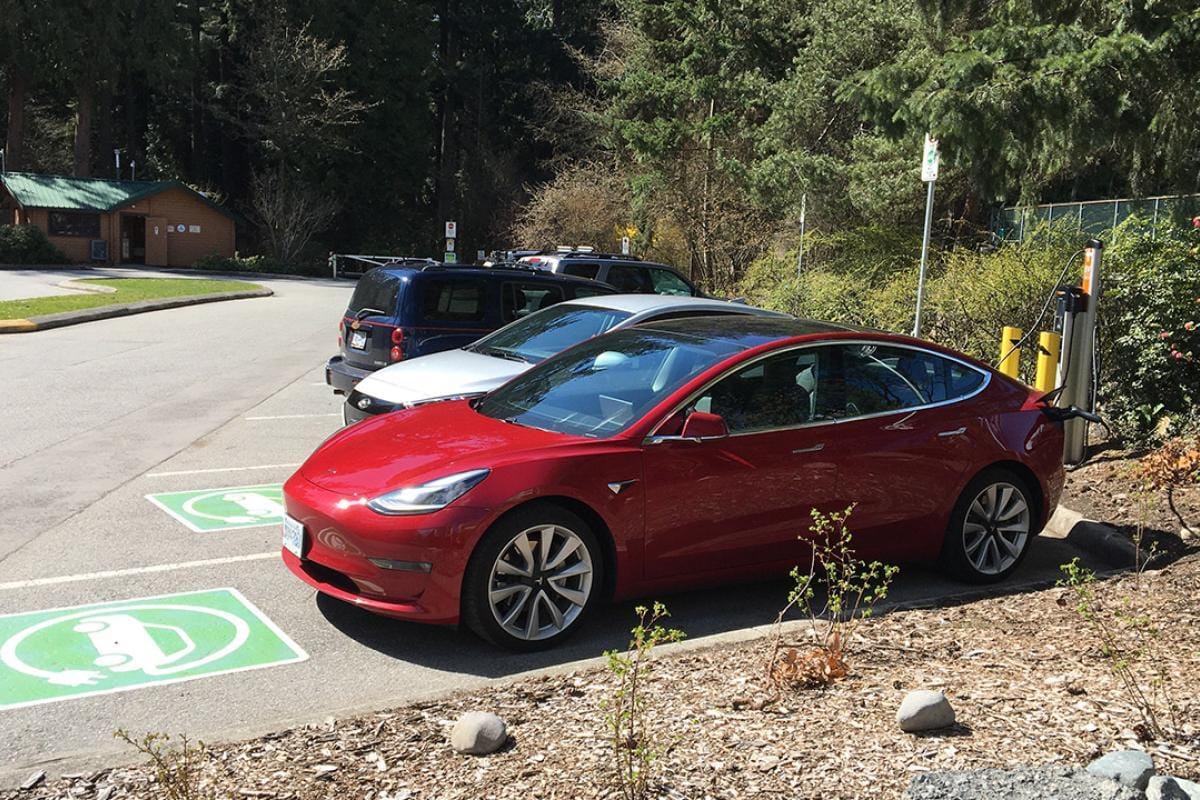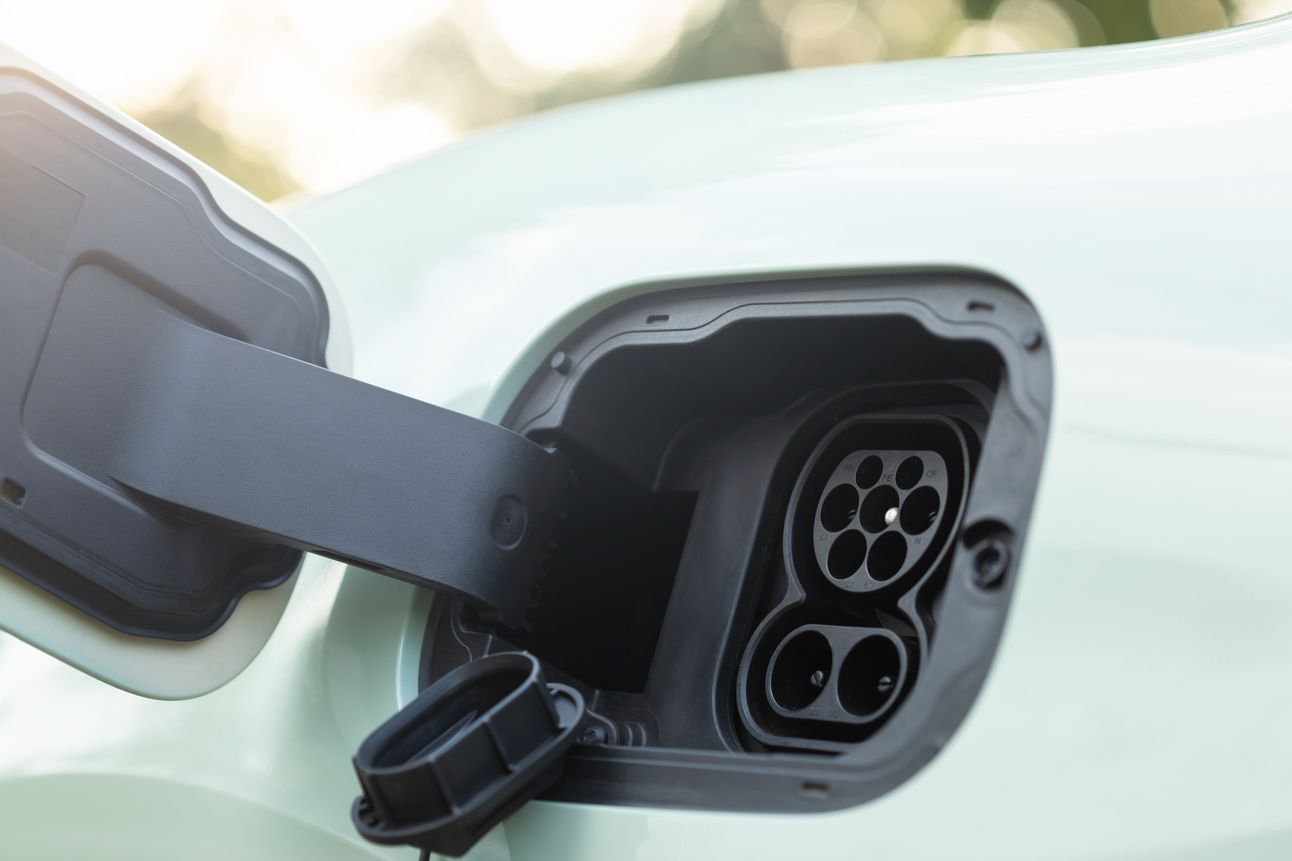Burnaby plans for a future of electric vehicles
During its meeting on Nov. 21, Burnaby’s Transportation Committee discussed a new strategy for electric vehicle (EV) charging stations to accommodate a future in which all the cars on the roads are EVs. According to a report titled “Public Electric Vehicle Charging Strategy Final Report” prepared by Dunsky Energy + Climate Advisors, Burnaby is projected to have 92% of its vehicles as electric vehicles by 2050.
Last summer, the city conducted a public engagement survey about EVs in Burnaby. The survey asked about current use of EVs and need for infrastructure in Burnaby, barriers to EV use, and the future of EVs in the city. According to a recent report about the results, the city received 800 responses.
The new strategy has several objectives, including incentivizing private investors to install EV charging stations, cooperating with BC Hydro and other entities to help increase the number of charging stations throughout the city, incorporating EV charging stations into new residential developments, and retrofitting old residential developments with EV-ready infrastructure. One of the recommendations states that a minimum of 45% of parking spaces provided for non-residential uses will be required to be EV-ready.
The committee discussed the proposed strategy at length, raising questions about how these preparations will affect housing developments, equity in providing sufficient charging stations in the city, and how to standardize EV charging ports.

Electric vehicles charging in a parking lot in Central Park, Burnaby. Photo: City of Burnaby
According to the 30-page document, Burnaby currently has 350 public charging ports, which include 315 level two ports at 105 sites. The city owns approximately 23% of all public level two ports, or 72 ports at 20 sites. At present, about 5% of vehicles in Burnaby are electric. The strategy aims for 2,260 level two and level three fast-charging ports by 2030, costing $45 million. Kathy Ho, senior manager of transportation with the city, said the funds will not all come from the city and will coordinate with third-party investors to explore different funding options.
“The key takeaways in the recommendations are: the city will continue to review and invest in city-owned charging infrastructure to meet our 2030 total target. The city’s target will range from 20% to 40% of the total,” she said.
Ho said the city would prioritize and streamline third-party public charging infrastructure by creating and implementing a processing framework to standardize the implementation and requirements for charging stations within city lands and public roads. Another key recommendation Ho mentioned is that the city aims to support EV charging infrastructures for car-sharing, ride-hailing, and taxi services.
Ho said the city would also incentivize private developers to include EV charging ports in new buildings with new policies and bylaws. She added that the city’s zoning bylaws have recently been amended to include EV-ready infrastructure in new residential and non-residential developments.
“I noticed that the fast level three charging is very expensive, $142,000 per port to $210,000,” said Coun. Richard Lee, who is also chair of the Transportation Committee. Lee added that unless the city partners with BC Hydro, this cost could become a burden for taxpayers.
Resident representative Morgan Nicholsfigueiredo said he supported adding more public charging stations, which would benefit residents living in older buildings that lack the infrastructure for EV charging and need retrofits that cost hundreds of thousands of dollars.
“I’m speaking from someone that lives in the Brentwood Mall area in a 32-year-old strata with 325 units, and our services in that building were under-built originally,” Nicholsfigueiredo said. “Just three years ago, we incurred the cost of about $300,000 upgrading the transformer and our service to that building, when the infrastructure for Brentwood Mall had to be changed, and BC Hydro changed all of their amperage. I wish at that time we knew a little bit more about what our demands were going to be in the future, because BC Hydro will only give you power that you need, they don’t really look too far into the future.”

Close-up of an open electric vehicle charging port showing both AC and DC connectors. Photo: Shutterstock
Lee asked about standardizing charging stations, adding that during a recent visit to Portugal, he and his family spent one and a half hours searching for a compatible charging port for their rental vehicle.
“Broadly, there’s a number of different sorts of fast charging interconnection interfaces, like the actual physical orientation of the connectors. So there’s been one called CCS, and then there’s another one called the North American charging standard that Tesla had. So previously, the Tesla standard was proprietary. Last year, they opened it up,” said Brendan McEwen, managing consultant at Dunsky Energy + Climate Advisors, who presented the strategy with Ho. “Good practices moving forward is as the city is considering procuring stations, as well as working with third-party partners that might be deploying charging infrastructure on city property, making sure that the specifications are such that it’s going to be interoperable and work with those two.”

